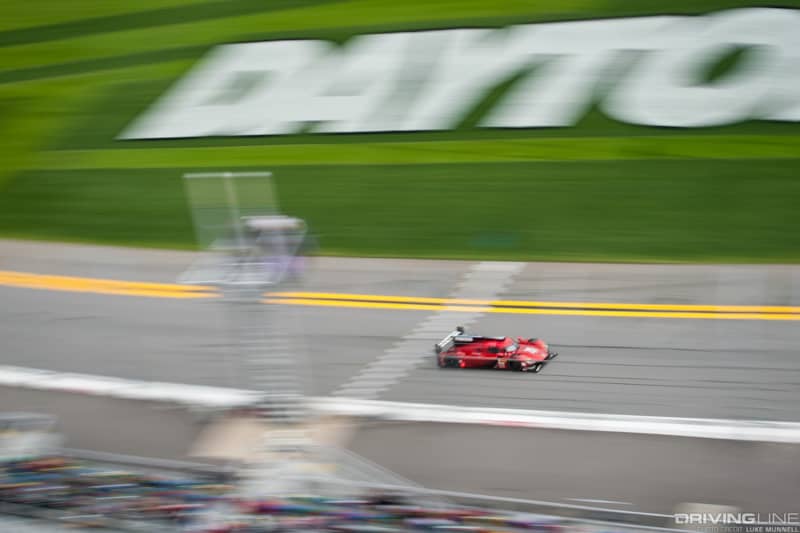On Track for Success: Mazda Team Joest Debuts at the Rolex 24 at Daytona
If we had to pick one car company that’s time and again created more impressive, innovative products and so many dramatic achievements with such humble resources, it would have to be Mazda.
Defying the Odds
Since their very beginnings, they’ve defied the odds, with founder Jujiro Matsuda transforming himself from a fisherman’s son to a captain of industry, and then narrowly surviving (along with his company’s Hiroshima-based headquarters) the infamous atomic bombing of August 6, 1945—Matsuda-san’s 70th birthday.
From those ashes rose a company that served the people of Japan in its darkest hours, helped revolutionize Japanese manufacturing and asserted Japanese automaking as a force to be reckoned with on roads and racetracks alike.
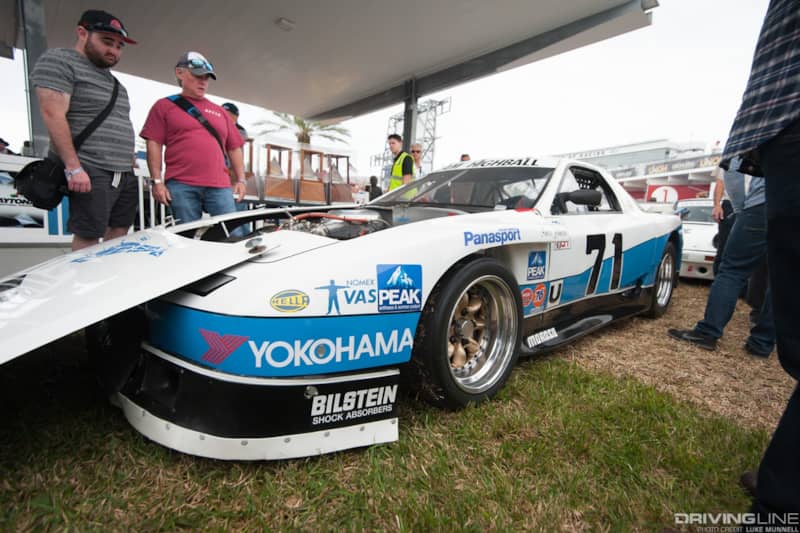
Who can forget 1991, when a resourceful but comparatively underfunded Mazda and its 787B racing prototype usurped European and American giants to become the only Asian carmaker (still to this day) to win the 24 Hours of Le Mans overall? Or the decade leading up to that feat when their rotary-powered no. 71 RX-7 became the winningest car (still to this day) in the history of the 24 Hours of Daytona?
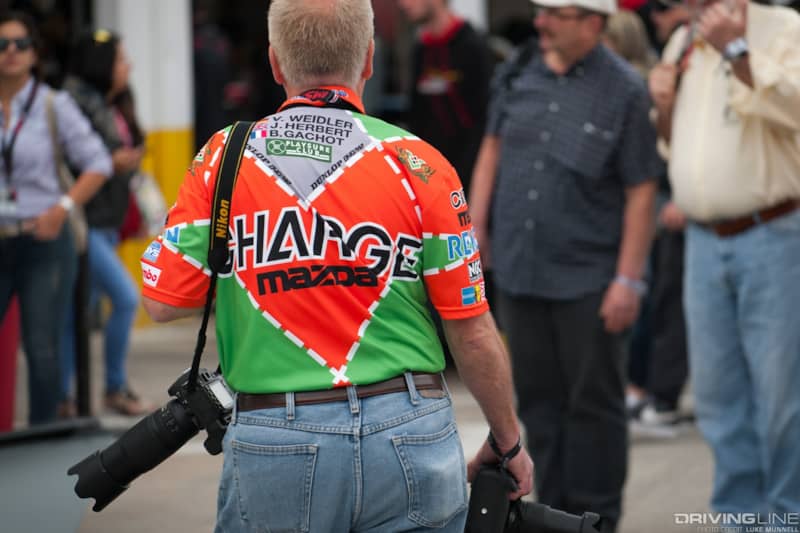
Success and Adversity
Even in this century, little Mazda has toppled giants at the top of professional racing.
From the late 2000s through early 2010s, while Dyson Racing was racking up American Le Mans Series (ALMS) race wins and locking up the 2011 championships with 2.0L, four-cylinder Mazda MZR-powered prototypes (against V8 and V12-powered competitors), SpeedSource Race Engineering was doing much the same in GT-class Grand Am competition with three-rotor Mazda RX-8s, scoring 18 race wins, two 24 Hours of Daytona wins and sweeping the 2010 championships against the usual onslaught of Porsche, BMW, Ferrari and GM rivals.
When Grand-Am announced the creation of the alternative-fueled GX class in 2013, Mazda put their newest SKYACTIV Clean Diesel technology on the line in a trio of brand-new Mazda6 machines against Porsche and Lotus rivals. They earned nine straight victories and yet another season championship sweep.
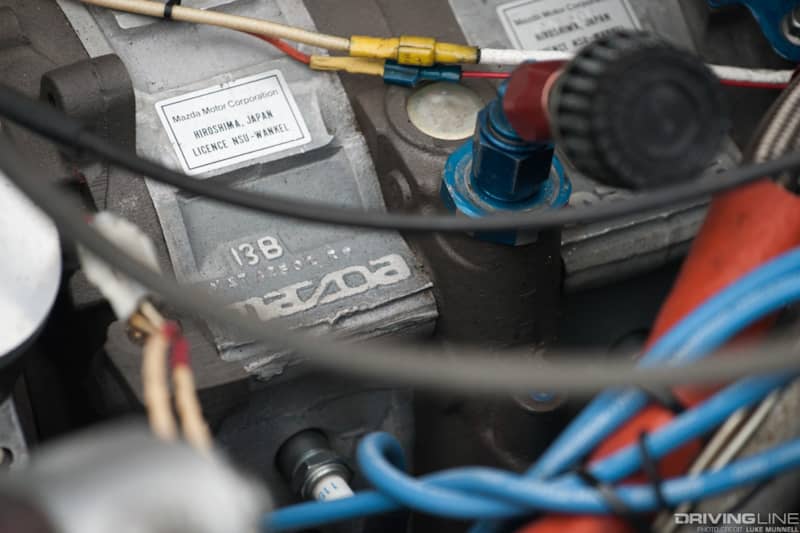
Mazda has had its share of success and adversity in the marketplace as well, and historically, it correlates to their racing efforts. No one here knew what Mazda or a rotary engine was when the brand entered the American market in 1970, but after the original Mazda Cosmo earned global acclaim and placed fourth in the Nürburgring’s grueling 84-hour Marathon de la Route race, sales more than doubled year-after-year in the early '70s.
After a slump to finish the decade (when the brand took a break from racing), sales more than doubled once again after Mazda’s first 24 Hours at Daytona win in 1979 and continued to grow throughout their winningest IMSA racing years. Mazda’s highest-ever market share coincided with that famed 1991 Le Mans win, and record sales were achieved just three years later, before falling off in the wake of the FIA’s ban on rotary engines for Le Mans racing and Mazda’s withdrawal from contention.

Sales then began to grow again alongside Mazda-backed teams’ aforementioned successes in Grand-Am and ALMS racing, but that growth seemed to slow with the brand’s unsuccessful 2014/2015 SKYACTIV Diesel prototype and 2016/2017 2.0L turbo gasoline prototype efforts in IMSA.
Whether racing drives vehicle sales for Mazda or vice-versa is a topic for debate, but there’s no denying the mutual symbiosis of the two. Today, with Mazda’s road-going vehicles arguably better than they’ve ever been, everyone’s favorite Japanese underdog knows it needs to get back on the podium and into the public eye, because—to re-tool the brand's current marketing platform for our purposes—Racing Matters.
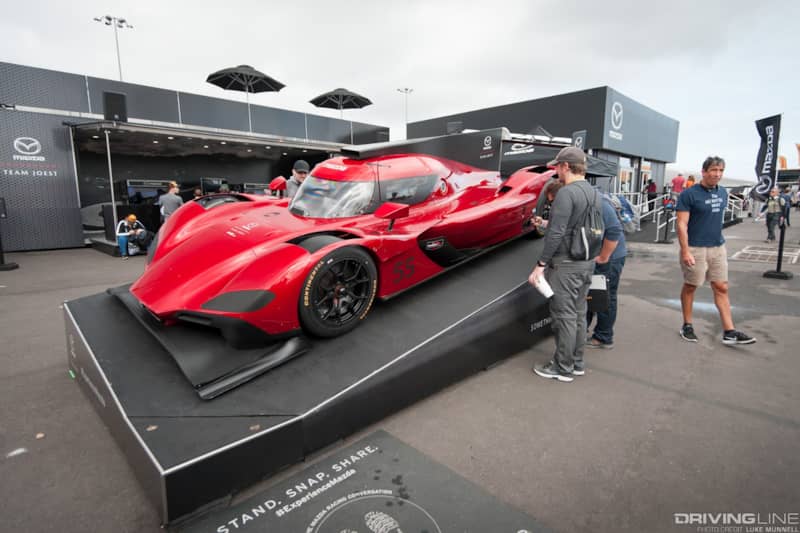
Starting Anew, Again
It’s been over half a decade since Mazda first introduced their SKYACTIV Technology to the world, and while it has absolutely made its mark by elevating the efficiency and performance of their road-going cars, it has yet to see success in Prototype or GT-class racing here or abroad. But if that technology is able to be competitive (as the data shows), they’ve partnered with the right team to make it happen: Joest Racing.
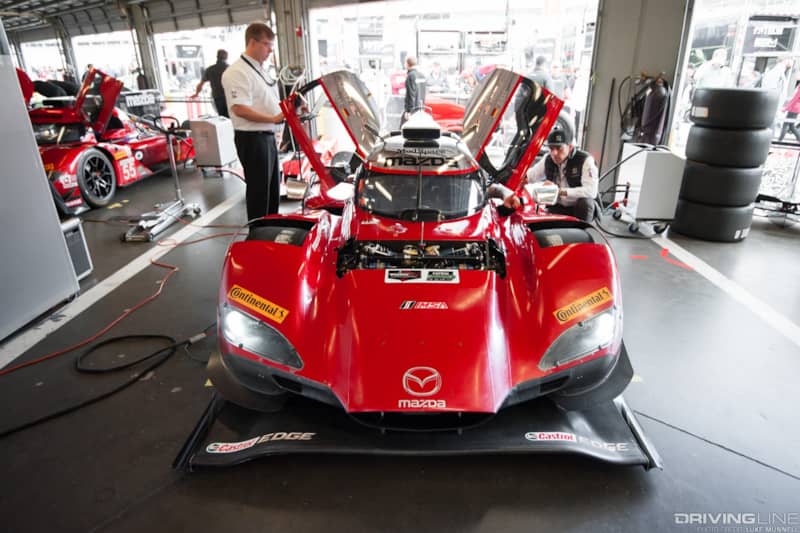
Established in 1978 by German factory Porsche racer Reinhold Joest, the team has accumulated endurance racing wins at Daytona, the Nürburgring, Sebring, Road Atlanta and Le Mans, including 13 24 Hours of Le Mans titles.
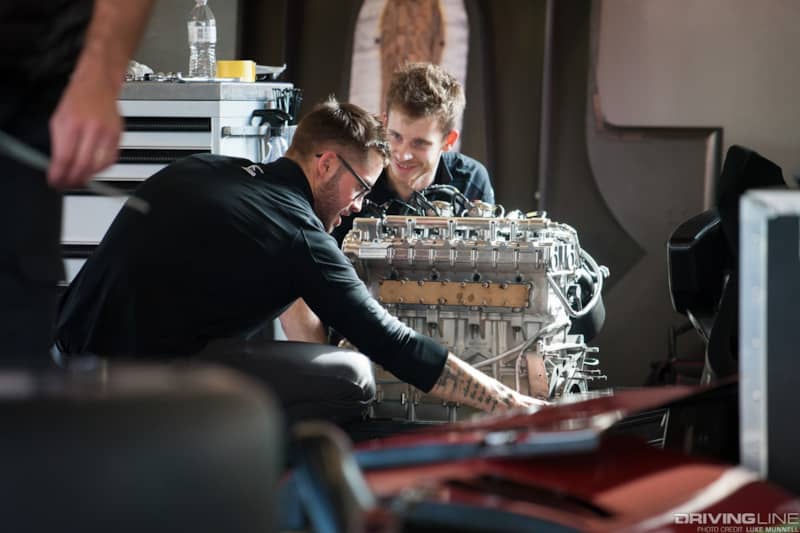
They helped propel Porsche and Audi to some of their most consistent and renowned victories, on our shores and internationally. Mazda has partnered with them in the hopes of elevating their effort to top-of-the-class winning results.
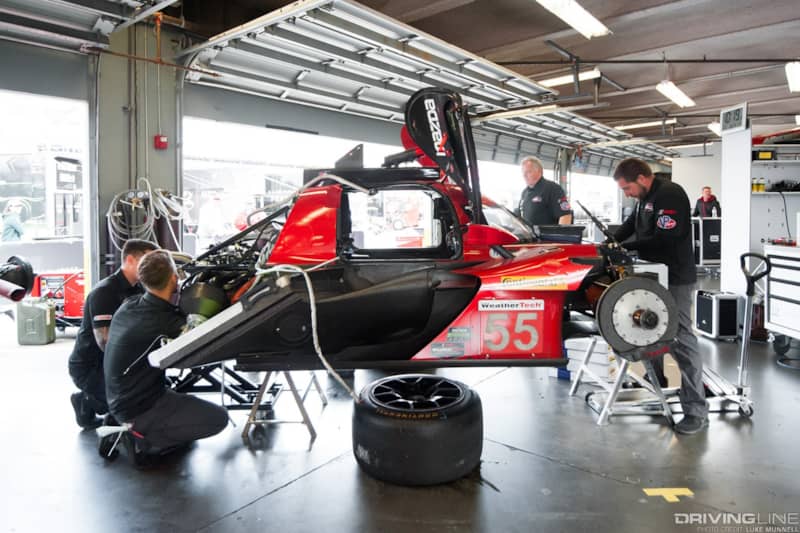
Picking up where SpeedSource Race Engineering left off, Mazda Team Joest’s weapons of choice will continue to be two DPI-class, Riley Technologies/Multimatic-produced RT24-P racing prototypes from last year, powered by the same 600+hp, AER-tuned Mazda MZ-2.0T turbo four-cylinder gasoline engines of the past two years.
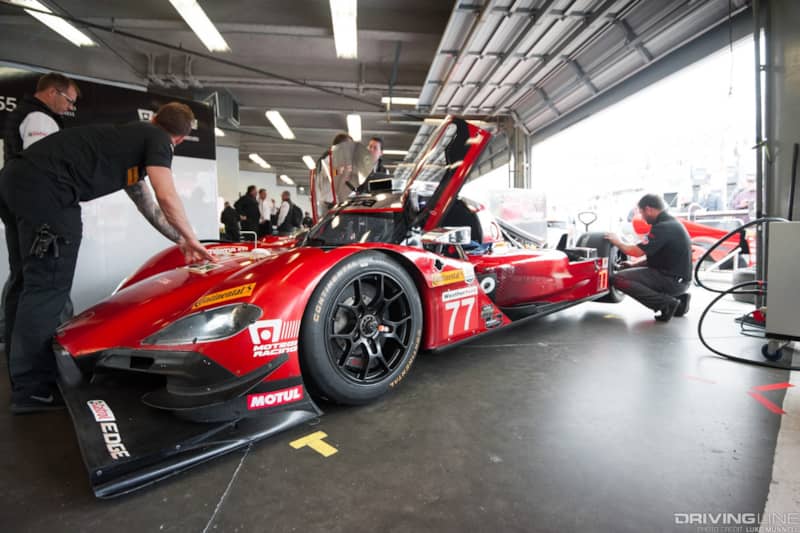
Each half of that recipe has been modified and re-tuned extensively, and the driver line-up at least for the 2018 Rolex 24 at Daytona included longtime Mazda wheelman Jonathan Bomarito, Tristan Nunes and Spencer Pigot, along with the addition of European aces Harry Tincknell, Oliver Jarvis and Rene Rast.
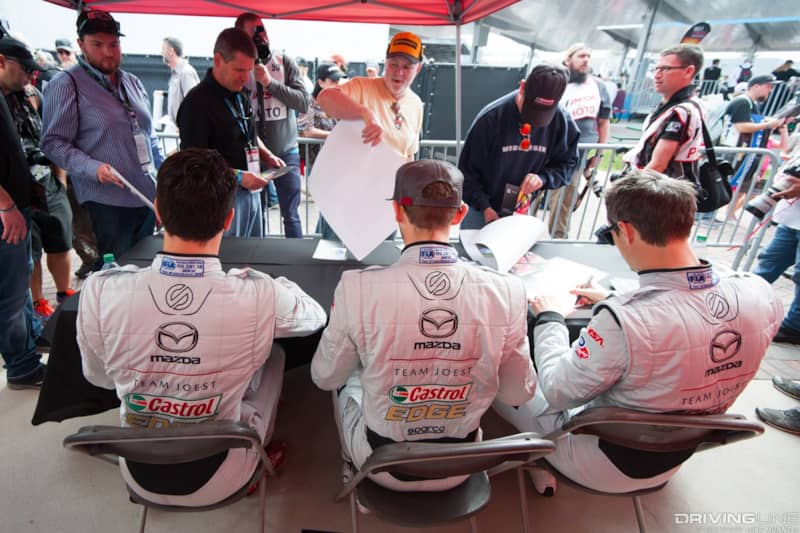
The 24 Hours of Truth
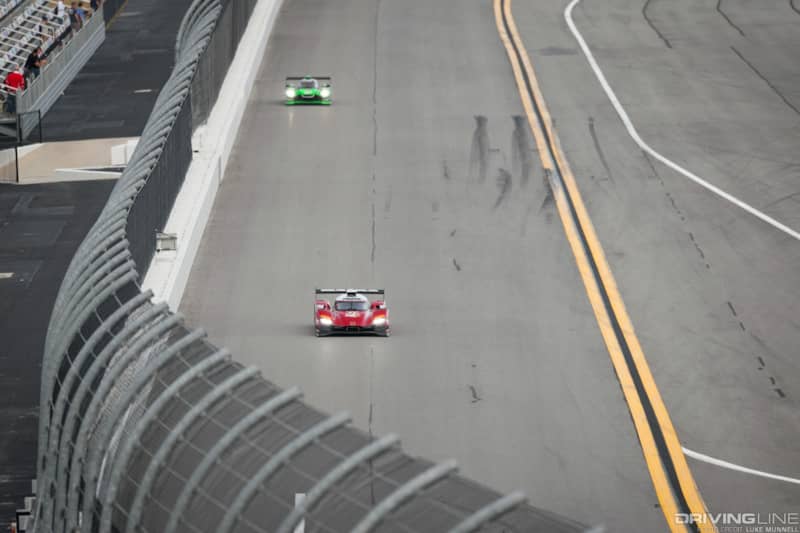
At the start of this year’s first practice session of the 2018 Rolex 24 at Daytona—the season-opening race to the IMSA WeatherTech SportsCar Championship series—Mazda Team Joest's plan seemed to be working.
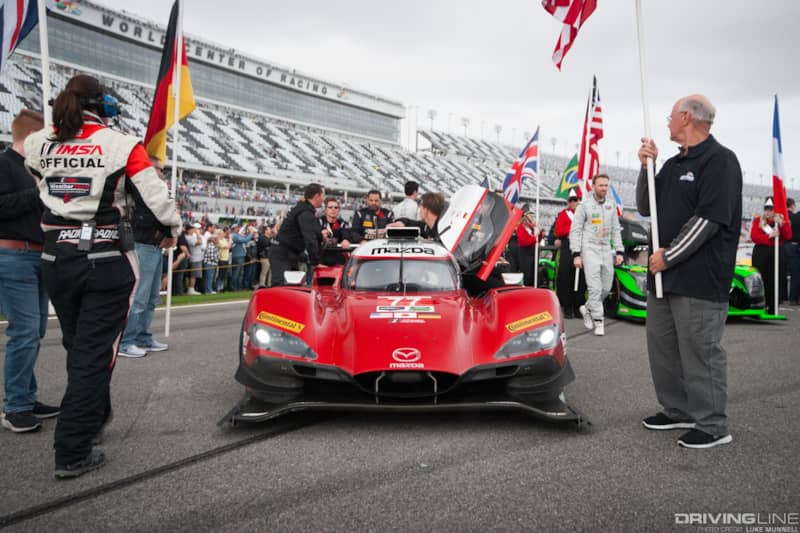
Their no. 77 car of Jarvis/Nunz/Rast clocked the fastest lap of the session, navigating the steep banked turns, wide-open straights and tight infield of Daytona International Speedway’s 3.56-mile Sports Car Course in just one minute, 37.428 seconds—faster than the four Cadillac teams that have dominated IMSA and Rolex 24 competition for the past several years and two new challengers each from Acura Team Penske and Tequila Patron Nissan.
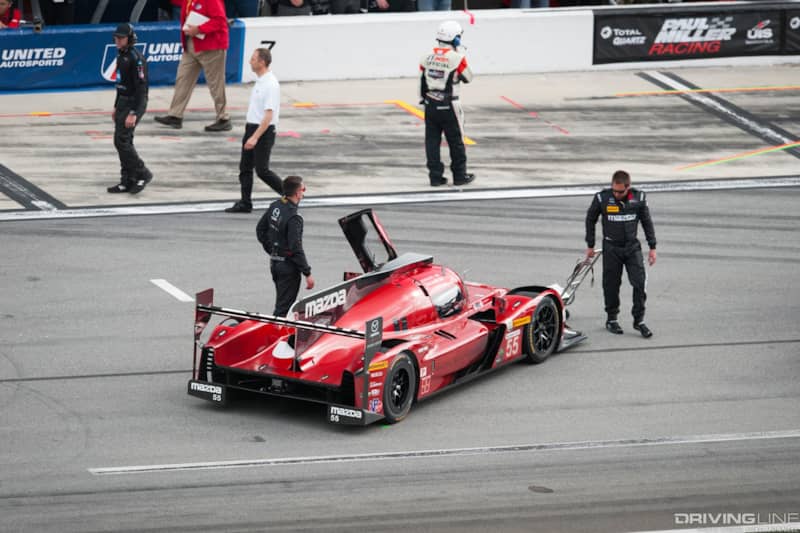
It was good for faster than any other car on the track.
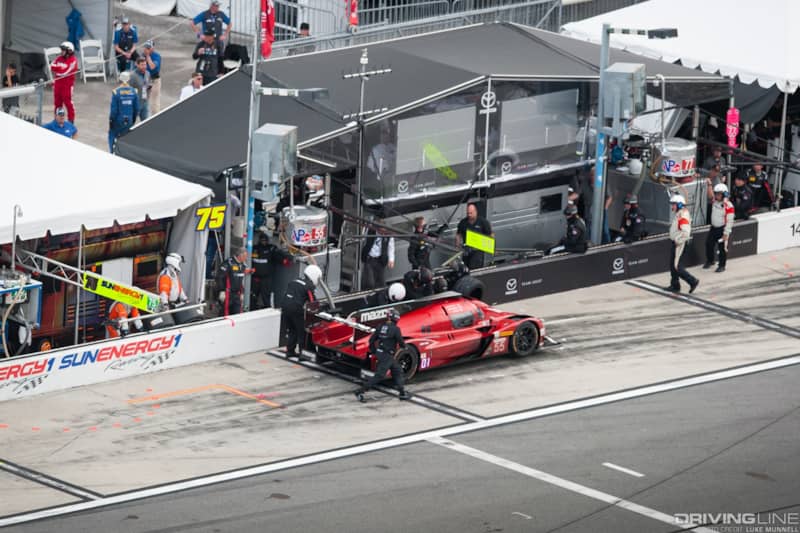
In qualifying, Mazda Team Joest improved on their times, with the no. 55 team of Bomarito/Pigot/Tincknell laying down a solid 1:36.633. But by that time a full eight prototypes had gone faster, including all the Cadillacs and one of the Acuras.
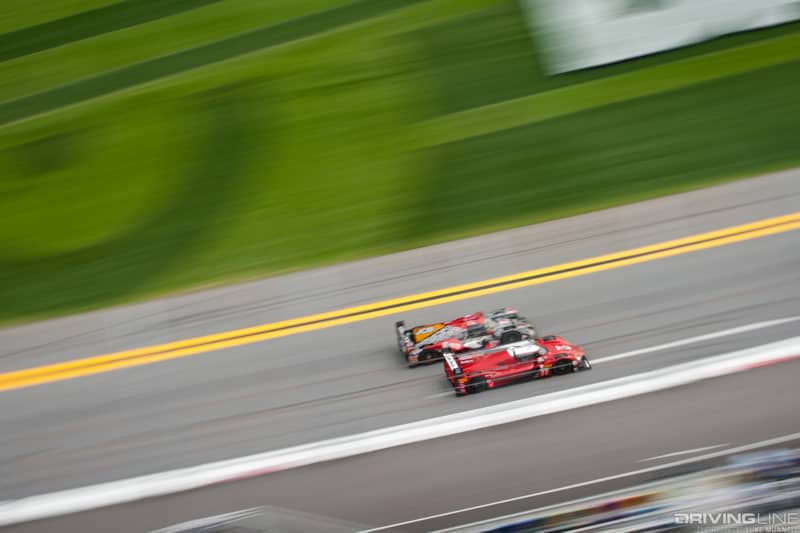
Since all qualified within roughly a half-second of each other, and Mazda’s winning recipe has traditionally been comprised more of fuel efficiency and reliability than flat-out speed, Mazda Team Joest had thus far made very good on its plans for success.
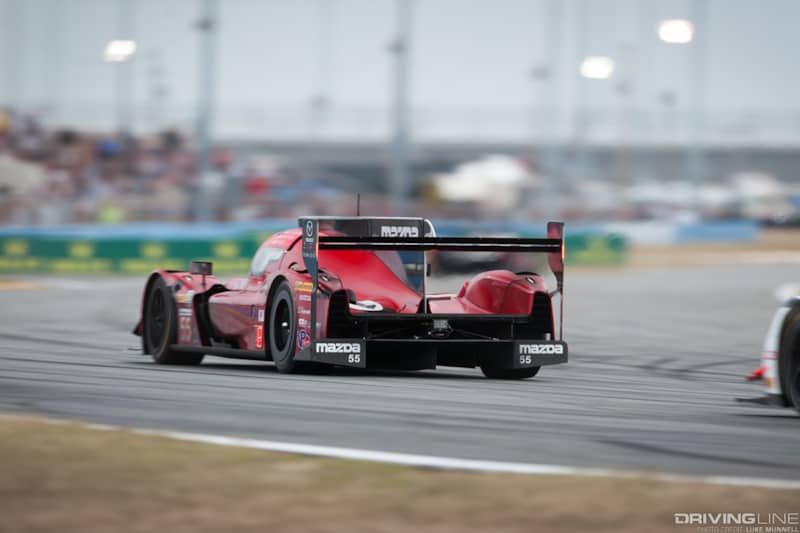
That would be the end of their success, however. From the drop of the green flag, the amount of bad luck that befell the team was unbelievable. It would have been comical, if not for it being so tragic to see it happen to two multiple championship-winning dynasties who so direly need their partnership to work.
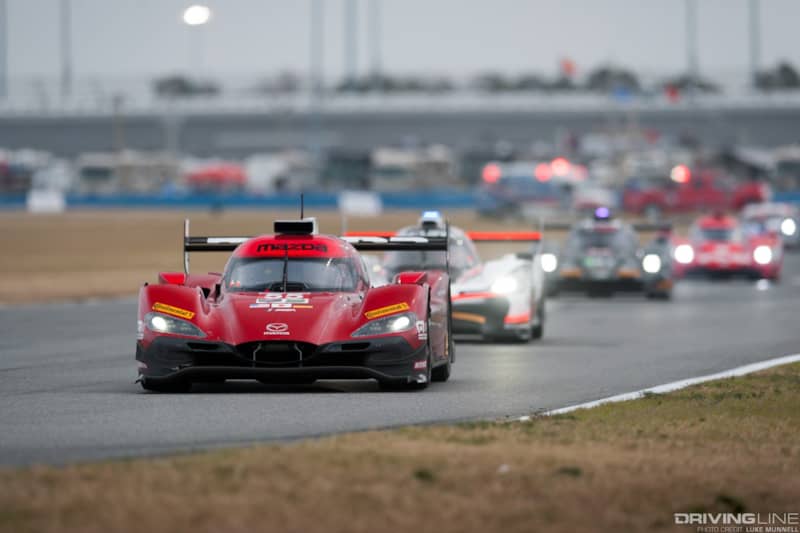
First, the no. 77 car seemed to have some trouble firing in the pits. Then a wheel broke clean off a hub on the no. 55 car. After that, the no. 77 car came into the pits with a gearbox issue, went back out after several minutes and came in again after suffering one of the first tire blowouts that would plague almost every Prototype team throughout the duration of the race. Once that happened, the no. 55 car pitted with what was initially thought to be a data cable issue, went back out on the track, came back in again and then refused to start back up.
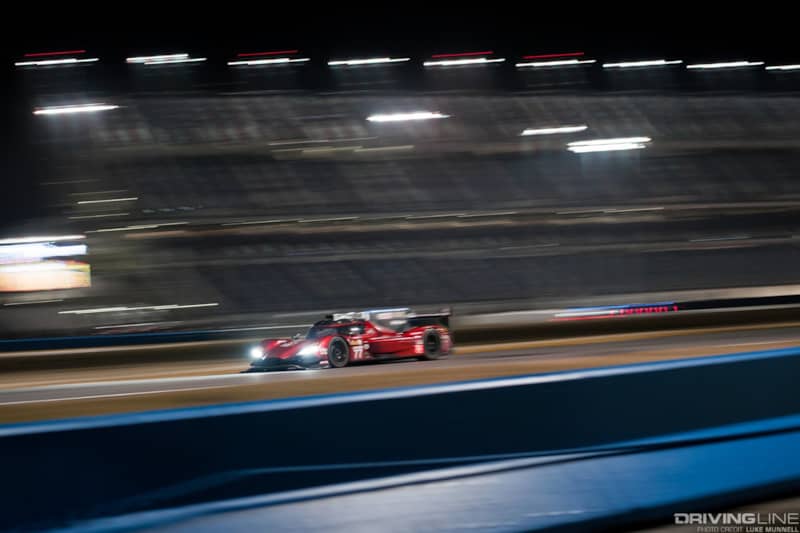
It would've been enough over the course of the race for most teams to throw in the towel, and this all happened within the first three hours.
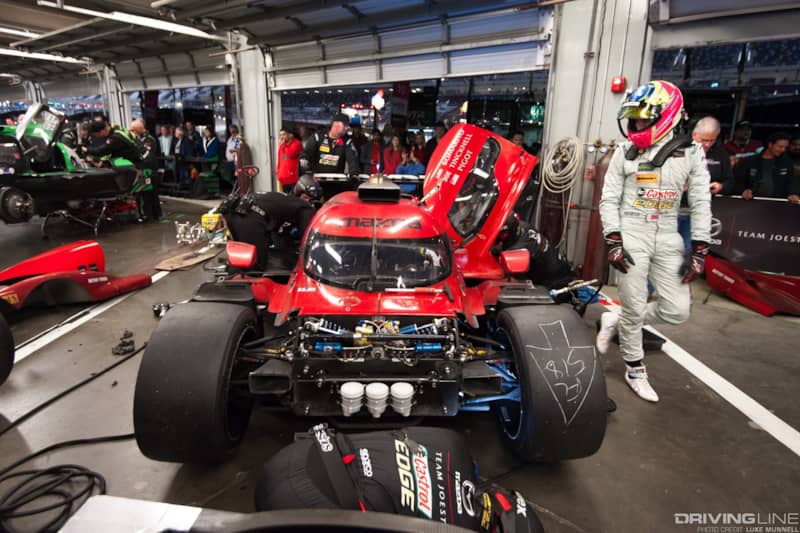
As the first day gave way to night, the problems for Mazda Team Joest persisted. The most common problem was tire blowouts, which on one of the cars was mainly caused by contact with bodywork that was damaged by another vehicle.
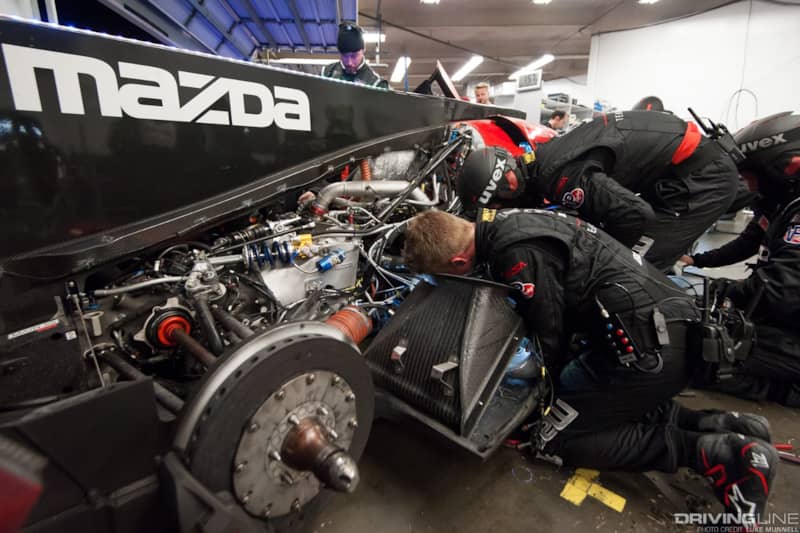
We would also learn that what appeared to be gearbox failures were actually related to a software issue involving throttle-position calibration (since the gearbox communicates with that system when downshifting). Short of re-writing the software, only temporary fixes could be applied that each took valuable time to calibrate and upload to the cars.
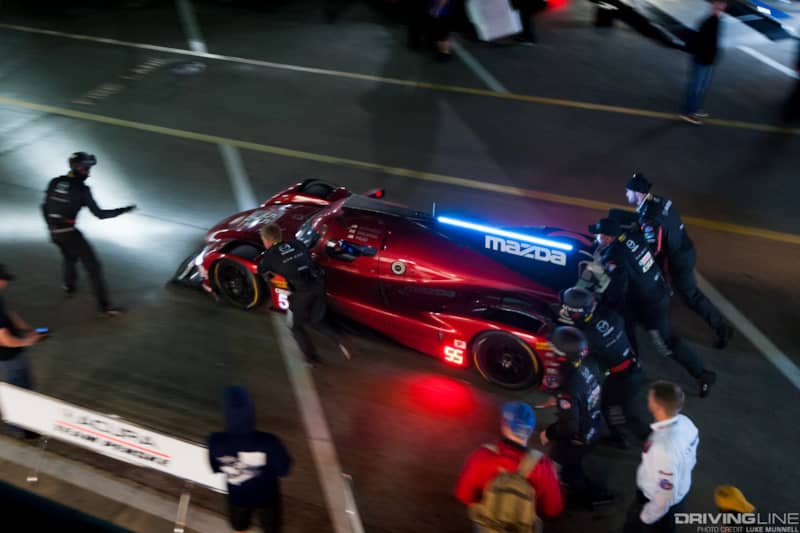
When the cars ran, they performed great, as did Mazda Team Joest and its drivers. But between their software glitches and the multitude of tire failures suffered by both cars, the team fell farther and farther out of contention as the race wore on.
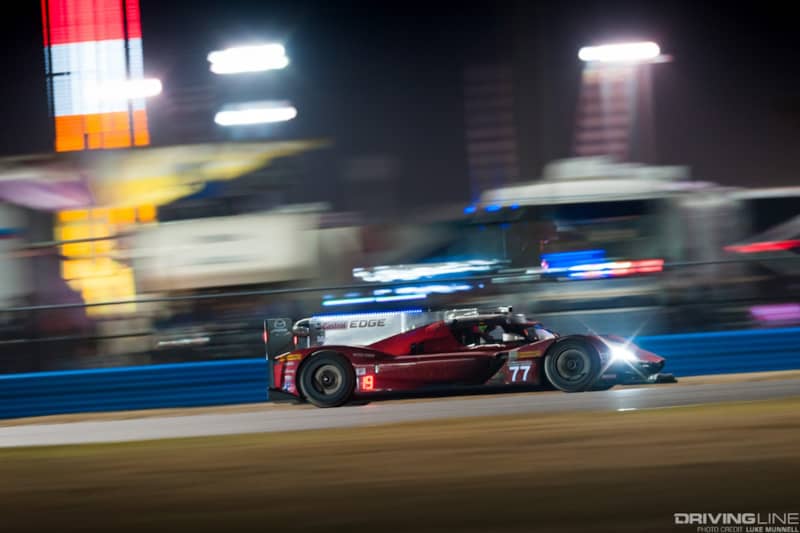
Even with all of their problems, they still survived the night.
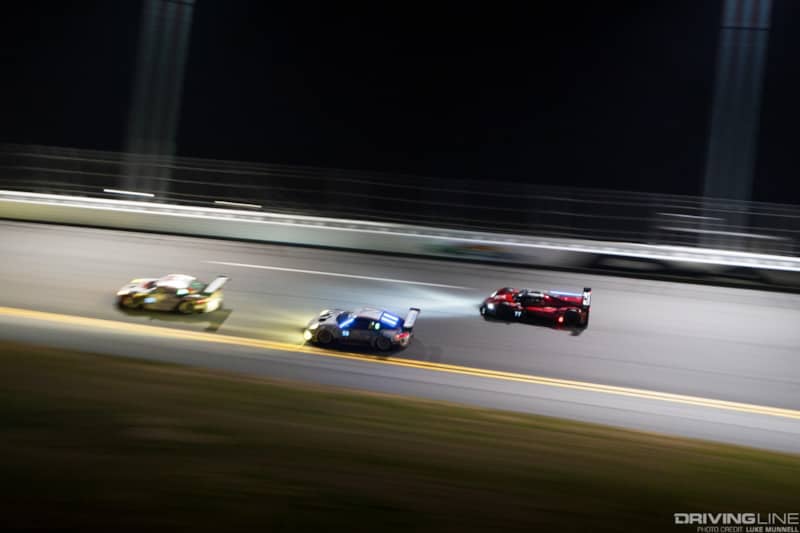
Discretion, the Better Part of Valor
Having exhausted every resource at their disposal, Mazda Team Joest put up a damn good fight. But late the following morning, they encountered their first impasse when a mechanical exhaust component on the no. 55 car broke free and contacted some surrounding bodywork, sending the back half of the car up in flames around the International Horseshoe (Turn 3), causing irreparable damage.
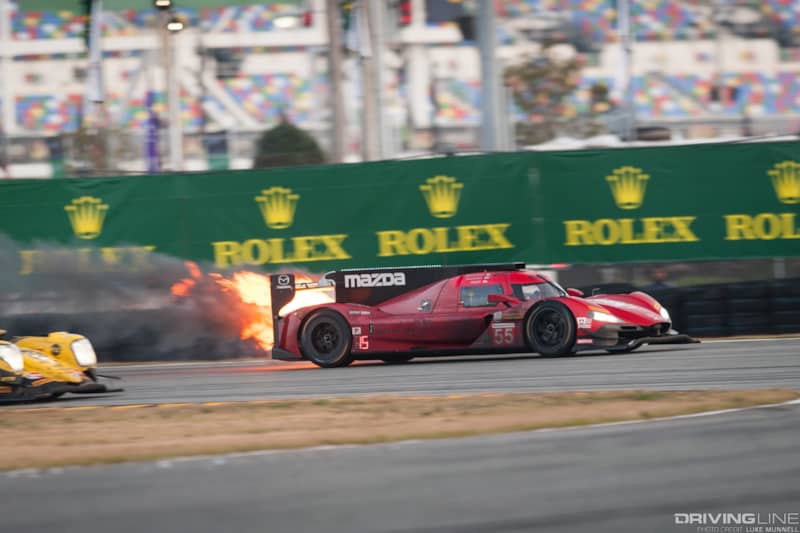
Not long after that, it became apparent that the electronic gremlins attacking the no. 77 car were beginning to affect steering and other systems, and the decision was made in the name of driver safety to retire that car as well.
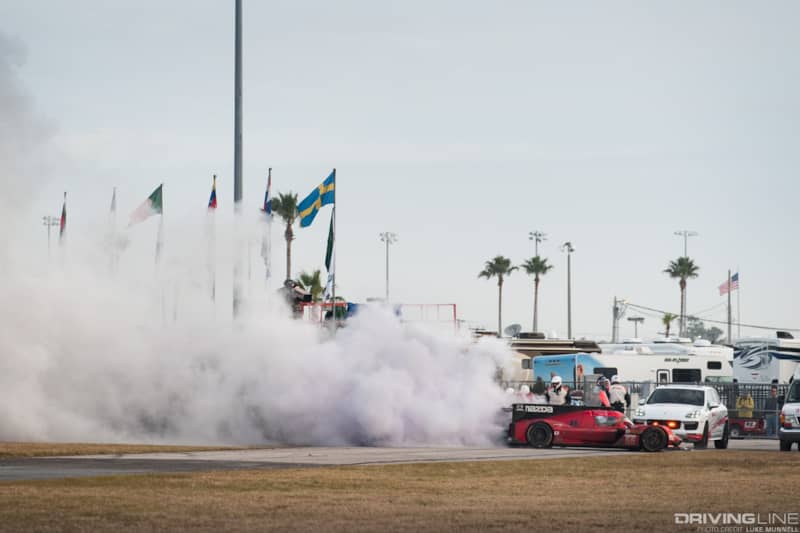
The Many Successes in Failure
In the words of another Japanese automotive captain of industry, “Success represents the 1 percent of your work which results from the 99 percent called failure.”
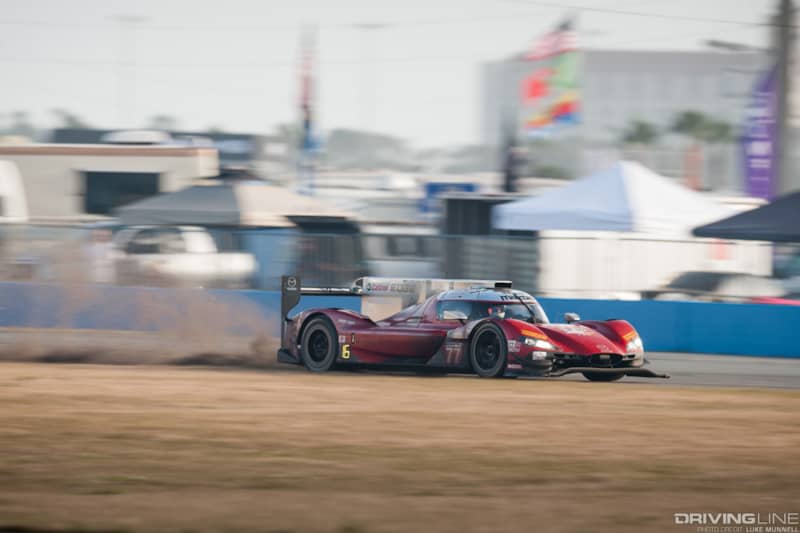
No, Mazda Team Joest didn’t find the success they were hoping for in their first-ever outing at this year’s 2018 Rolex 24 at Daytona, but they stuck with it long enough to gather some valuable data not only on their own effort, but that of their competition. Drivers and team members honed their processes, mechanical fail points were identified and surely remedied by now and after 24 hours of racing the team is only down one race of 12 scheduled for the season.
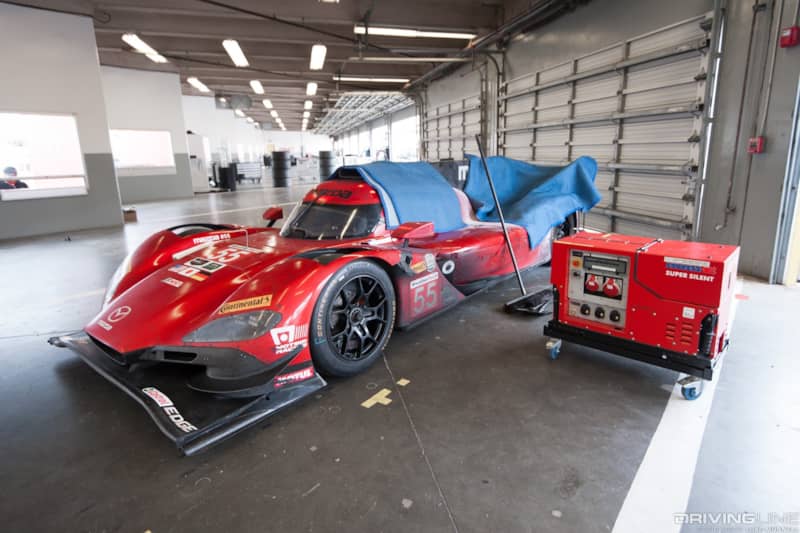
The odds may not be in their favor, and their rivals appear stronger than ever. But if there’s one thing history has taught us about Mazda, it’s that those might be the perfect conditions for them to surprise the world once again.
